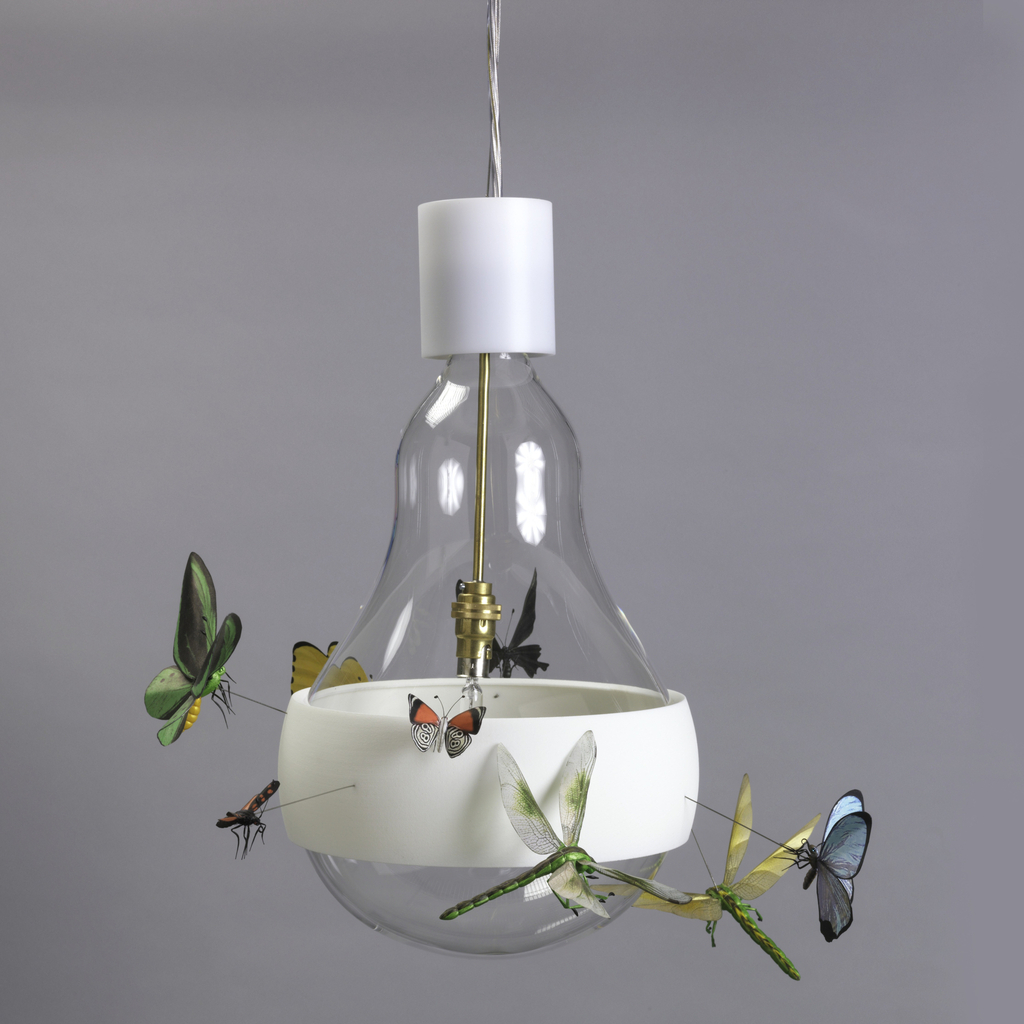This desk by Paul Frankl is an example of American streamlined furniture of the 1930s. Frankl trained as an architect in Germany and Austria before settling in New York in 1914, as a decorator and designer. He created geometric furniture designs for Frankl Galleries in Manhattan. Frankl’s design philosophy centered on designing for the future,...
This vase was designed and made by Hilda Jesser. Jesser attended the Kunstgewerbeschule (School of Applied Arts) in Vienna from 1914 until 1917 where she took classes with members of the Wiener Werkstätte whom she designed for from 1916 to 1921. During her time as a student at the Kunstgewerbeschule she primarily focused on fashion...
This plate was designed by Joseph-Theodore Deck, who worked at Sèvres as a designer before eventually becoming director in 1887 until his death in 1891. Prior to becoming director, Deck was part of the Council of Improvement and helped to establish aesthetic and technical directives for the manufactory at the end of the nineteenth century....
This brooch of flowers in a basket is made of diamonds set in silver with a gold backing. The diamonds on this brooch are so numerous and so large that for a time, it was thought that the diamonds were fake and made up of a type of fake stone known as paste stones, which...
Functionalism is the idea that form should follow function; objects should be designed simply, honestly, and directly. [1] It should be immediately clear to a viewer and a user what the object is and how to use it. Functionalist objects are primarily domestic objects, which makes this milk jug an example of Functionalism in inter-war...
This desk is an example of the Italian interpretation of the Art Nouveau style, known as Stile Floreale. This desk model was exhibited by Carlo Zen, a Milanese furniture manufacturer, at the 1902 First International Exposition of Modern Decorative Arts, in Turin, Italy. The exhibition helped Italy to show the rest of the world that...
The Castellani jewelry firm (1814 – 1927) became known for its “Italian Archaeological jewelry,”[1] which consisted of copies and imitations of Roman, Greek, and Etruscan jewelry. The firm’s works in this style became especially popular starting in the 1850s due to a rise in nationalism as a result of efforts to unify Italy, though they...
This teapot demonstrates a unique way of creating organic and curved lines, which can be seen in the handle. Chunghi Choo’s calligraphy brush strokes served as the inspiration for the handle and knob. According to Choo, the “sweeping movements of the brush…give it a flowing line of energy.”[1] Chunghi Choo studied painting, including Chinese brush...
The Cross Check Chair is named after a hockey infraction in which a player holds their stick vertically and blocks another player, illegally checking them. The name is also a reference to the seat of this chair, which is made out of interwoven maple plywood strips, creating a check pattern, and a double meaning of...
With the days growing longer and colder, reminders of summer are always welcome. The whimsical design of the J.B. Schmetterling lamp designed by Ingo Maurer and Axel Schmid, with its realistic-looking insects and butterflies, brings nature to an indoor environment. Produced in 2011, the J.B. Schmetterling lamp is a limited edition art piece. The lamp...
With the increase in the visibility and popularity of cosplay (short for costume play), I thought we could look at an example in the collection to show the long tradition of dress-up in western culture. In the past, people from other cultures, and their dress, were extremely interesting to western culture. These cultures were new...










